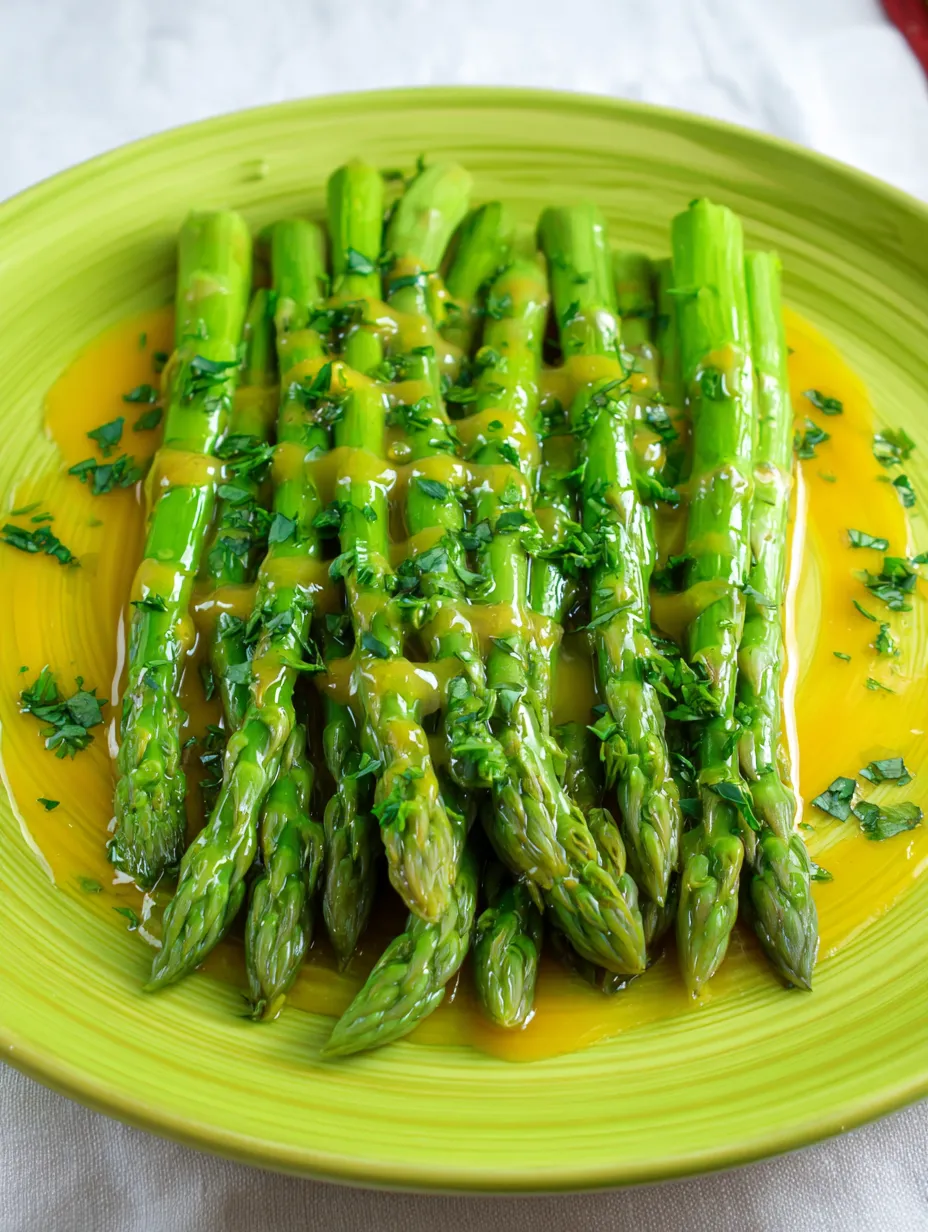 Save Pin
Save Pin
This colorful plate of roasted asparagus with a glossy tangerine sauce gives side dishes a little fancy flair. It turns everyday spring veggies into something special. I usually whip it up when the asparagus looks especially good and guests always rave about the bright, tangy drizzle.
First time I mixed these flavors was for a crowd and it totally stole the show. Now I reach for this combo anytime I want something low-effort but showy. Prepping the sauce in advance makes serving stress-free.
Vibrant Ingredients
- Asparagus spears, fresh: look for stalks that feel snappy and tips that are closed up tight
- Olive oil: use extra virgin for bold taste and extra richness
- Salt: cranks up the natural taste of the asparagus
- Pepper, black: toss in for a mild kick
- Sugar, granulated: this forms the base of the sauce and tones down acidity
- Tangerine juice: squeeze it fresh for max citrus flavor
- Rice wine vinegar: makes the sauce tangy and gives it a bit of bite
Simple How-To
- Finishing Up and Drizzling:
- Take your roasted asparagus, set it out on a plate, and pour that shiny tangerine sauce over top. The orange sauce makes those green stalks pop and looks super inviting.
- Make the Tangerine Sauce:
- As your asparagus cooks, drop sugar, tangerine juice, and rice vinegar in a little pot on medium heat. Whisk now and then, and once it boils, let it bubble until it thickens a bit—should coat a spoon. It’ll smell sweet and tangy.
- Bake the Asparagus:
- Lay your seasoned spears on a pan in an even line. Put them in a hot (400 degree) oven for about 12 to 15 minutes so they just get soft and catch those golden spots.
- Prep and Season:
- Bend each asparagus spear near the base to snap off the tough part. Toss all the spears in olive oil plus a shake of salt and pepper, until every piece looks coated. Prepping like this helps everything cook the same and taste great.
 Save Pin
Save Pin
The smell of tangerine juice in this dish is hands down my favorite. It fills the kitchen with a sunny, happy scent. Zesting and juicing always makes me think of my grandma, who swore by citrus in her savory cooking—she showed me fresh juice changes everything.
Keeping It Fresh
Leftover asparagus stays good up to a couple days if you stash it in the fridge, sealed up. Keep the sauce on its own and just warm it a little when you want to use it again. That keeps it nice and smooth.
Swaps and Alternatives
No tangerines? Reach for oranges or clementines for the same splash of brightness. You can use apple cider or white wine vinegar instead of rice vinegar, but the taste gets a little different.
Ideas For Serving
 Save Pin
Save Pin
Pairs great with roast chicken or grilled fish. Makes a tasty addition to a springy lunch table with some crusty bread and tangy goat cheese. Even just spooning the sweet-tart sauce onto plain rice or grains makes things special.
French Flavors
Gastrique is classic French for a syrupy sauce that’s both sweet and sour—meant to bring balance to food. Swapping in tangerine instead of the usual wine or lemon brings a fresh, seasonal twist and lets the spring veg really pop.
Common Recipe Questions
- → What's a gastrique?
A gastrique is a classic French sauce where vinegar and sugar bubble down together with fruit juice to make a tangy-sweet, glossy finish.
- → Can I swap in orange juice for tangerine?
Absolutely—orange juice works just fine and brings that same zesty sweet flavor for the glaze.
- → How will I know the asparagus is ready?
They’re done when you see some browning, they’re nice and crisp-tender, and a fork slips in without much effort after roasting about 12–15 minutes at 400°F.
- → Do I have to use rice wine vinegar?
Rice wine vinegar gives subtle tang, but swapping in white wine vinegar will do the job just as well.
- → What should I serve with this?
Try it next to grilled fish, roasted chicken, or a fresh springy salad—it goes great with all of them.
- → Storing leftover asparagus?
Pop leftovers into a container with a tight lid and keep them chilled up to two days. Warm them gently so they don’t get mushy.
